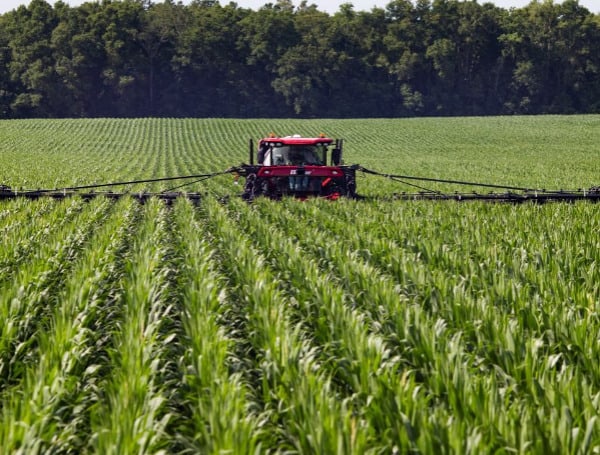Forever chemicals, or per- and poly-fluoroalkyl (PFAS), are synthetic chemicals developed in the 1940s and used in a variety of applications across the world. These substances are highly resistant to temperatures, water, and oil, making them ideal for non-stick cookware, stain-resistant fabric, and firefighting foams and equipment. Although efficient, it was only in 2000 that the actual effect of these substances on human health was understood.
Today, PFAS are linked to more than 13 serious human diseases, with treatment costs for just five of these conditions alone estimated at approximately $63 billion. Concomitantly, it was estimated that to remove contamination from the environment caused by PFAS produced in a single year, $106 trillion is necessary, exceeding the total global GDP.
As PFAS have infiltrated all aspects of life, a serious concern is now raised with the contamination of farmland in the U.S. PFAS are estimated to have reached 70 million acres of agricultural land in the past few years, which is now unusable. Decontamination costs are significant, while people or animals cannot consume crops grown on this land. This poses a serious threat to the U.S. food security and the economy.
READ: Florida Sen. Rick Scott Applauds Termination Of US-Mexico Tomato Agreement, Win For US Farmers
The Relief for Farmers Hit with PFAS Act was proposed in 2023 to address this problem across various domains. The Act suggests a fund of $500 million for research into decontamination efforts, safer agricultural methods, and financial support for farmers affected by forever chemicals. Nonetheless, this Act is yet to be made law. Without federal support, many farmers across various states sued major PFAS manufacturers. Similar lawsuits against these companies ended in settlements worth billions, funds that will be used to decontaminate drinking water supplies.
Florida Farmlands and Sources of PFAS Contamination
Florida has 9.7 million acres of farmland, spanning across 44,400 farms. In 2022, $8.88 billion was generated from this land in agricultural cash receipts. The state leads the U.S. in production value for Valencia oranges, floriculture, sugarcane, sweet corn, and watermelons. Top commodities include vegetables and melons ($1.7B), floriculture ($1.17B), and sugarcane ($787M).
Notably, Florida is not only a top agricultural producer, but this industry is also one with massive employment and implications for U.S. external trade, with major export partners in Canada, Mexico, and the Caribbean. Trade with these countries and others exceeds $700 million annually.
With widespread contamination of PFAS on Florida’s agricultural lands, the economic impacts would be devastating. Presently, three primary sources of contamination are known. Firstly, farmland can become contaminated indirectly by being near military bases where PFAS-based firefighting foams are used. Currently, there are around 20 known contaminated military bases across the state.
READ: Everglades Farmers Gain Powerful Ally In Disease Control With New UF/IFAS Plant Pathologist
Secondly, besides military bases, more direct routes of contamination exist, either from direct pollution of water sources used unknowingly by farmers for irrigation, or through the dispersal of biosolids, a special class of fertilizers from sewage sludge. Biosolids, in particular, were linked with widespread contamination, as at the moment, no federal legislation mandates companies selling these products to test and decontaminate, or issue warnings for buyers.
Relief for Systemic Issues in PFAS Contamination of Farmland
While the Relief for Farmers Act may be a positive start in addressing the PFAS issue at a federal level, systemic issues are still virtually ignored. For example, the absence of regulations from the Environmental Protection Agency (EPA) for biosolid testing continues to exacerbate this crisis. In some states, legal action was not taken only against major PFAS polluters but also against the EPA for failing to develop and implement such legislation.
Hence, addressing PFAS contamination in agriculture demands urgent, systemic reform. Beyond financial relief, robust federal regulations, transparent biosolids testing, and accountability from polluters and agencies like the EPA are essential. Without swift action, the future of U.S. farmland, food security, and farmer livelihoods remains critically at risk.
About the Author
Stan Gottfredson serves as the President and CEO of Atraxia Law, a legal support organization based in San Diego. The firm assists individuals affected by environmental hazards and toxic substance exposure, providing guidance and resources for those navigating complex health-related legal claims.
Please make a small donation to the Tampa Free Press to help sustain independent journalism. Your contribution enables us to continue delivering high-quality, local, and national news coverage.
Connect with us: Follow the Tampa Free Press on Facebook and Twitter for breaking news and updates.
Sign up: Subscribe to our free newsletter for a curated selection of top stories delivered straight to your inbox.

